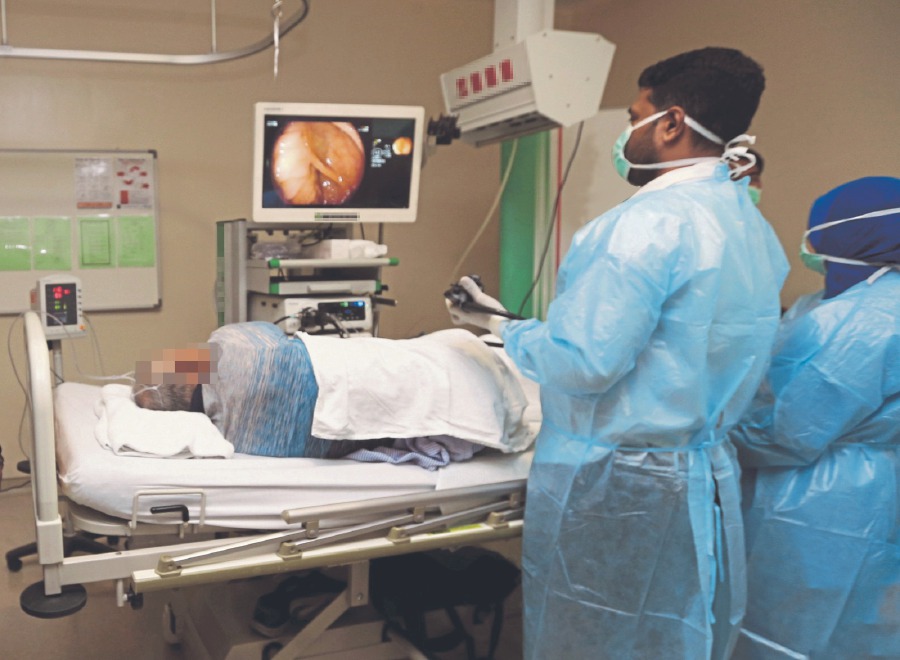CONSUMERS should be informed that buying an insurance plan does not ensure unrestricted access to their healthcare providers or facilities.
The healthcare system, which is dominated by the payers — the insurance companies — is subject to tight regulations by companies.
Insurers have enormous authority to determine which healthcare providers and institutions are included in their network.
As such consumers may be limited to a small number of healthcare options, often neglecting personal preferences or individual medical needs.
This is especially important for patients who require specialised care or have a strong preference for a particular hospital or doctor, which may be outside the insurer's network.
Furthermore, insurers set the reimbursement terms for healthcare services.
Thus, consumers must pay high out-of-pocket expenses for services not covered by their insurance plan, or worse, vital treatments and procedures are excluded from coverage.
When insurers withdraw cashless facilities from hospitals that they believe are too expensive, they explain their decision by branding the hospitals as inefficient.
This narrative is incorrect.
Efficiency should be judged not only by immediate costs, but also by the entire value given, including service completeness, investment in cutting-edge equipment, and recruitment and retention of top medical professionals.
Private hospitals are sometimes regarded as pricey because they invest in innovative medical equipment and specialised staff.
By focusing on price, insurers ignore the overall value these institutions provide.
When these hospitals lose cashless facility assistance, patients are compelled to pay high upfront fees or seek alternative care at public hospitals.
This move puts a strain on the public healthcare system, which is underfunded and unprepared to handle a rapid inflow of patients.
Public hospitals, dealing with high wait times and limited resources, would struggle under the additional burden.
To adhere to the principle of continuous treatment when withdrawal of cashless facilities are triggered, patients are requested to choose other private hospitals, depriving them of the ability and comfort of having the same doctor who has been treating them for years.
It is almost impossible and unfair for patients who have paid rising premiums to be forced to switch to a new provider unless they are willing to pay and claim.
In special cases, the entire panelship with the hospital is cancelled.
So consumers must examine their insurance policies, paying attention to the network of providers and coverage details.
If insurers continue to withdraw financing from hospitals that provide innovative medical care, the healthcare system will suffer.
To avoid a collapse that would leave patients without the care they require, insurers must shift focus from cost efficiency to protecting public health.
One pressing challenge is affordability.
Premiums, deductibles and out-of-pocket expenses have gradually increased, making it difficult for many to afford the coverage required.
One option would be to adopt a universal healthcare system in which all citizens are automatically registered in a government-run insurance programme.
This would eliminate the need for private insurance firms, potentially lowering prices by allowing the government to negotiate the lowest rates with insurers.
Furthermore, this system may be funded by a combination of taxes and lower administrative costs, making it more affordable to everyone.
However, those who want a pleasant recuperation with selectivity of doctors may have to pay the premium out of pocket.
The future of medical insurance could include a more comprehensive, adaptable system that covers a broader range of services and treatments.
Finally, access to care is a crucial aspect for the future of medical insurance.
Access to healthcare varies across the country, with certain places lacking access to specialised services.
To solve this, the future of medical insurance may include attempts to boost the distribution of healthcare resources, such as incentives for healthcare providers to operate in underserved areas or the use of telemedicine and other cutting-edge technology to increase access to care.
Consumers, government stakeholders, and regulators must keep an eye on insurance companies' methodologies, which may appear to control private healthcare costs.
We do not want consumers to end up with a bad bargain despite the high premiums.
DATUK DR KULJIT SINGH
Kuala Lumpur
The views expressed in this article are the author's own and do not necessarily reflect those of the New Straits Times





